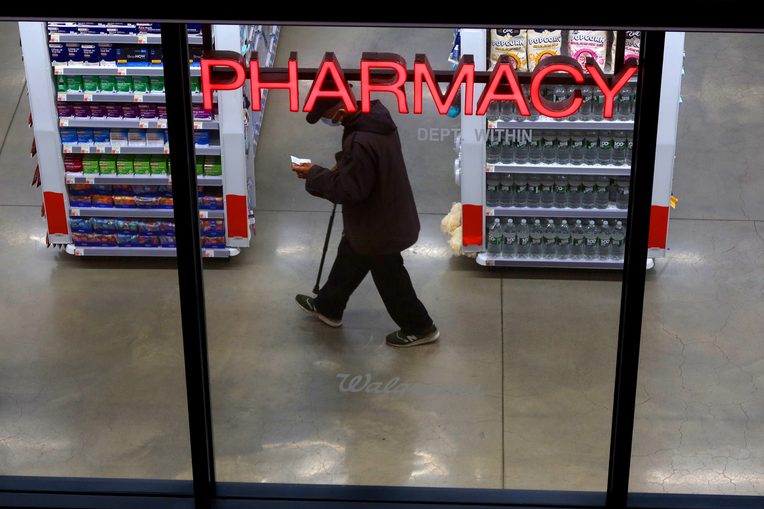When the storm hits, the worst course of action is to cling to the past, replaying “what ifs,” panicking over what should have been done, or wishing the winds would simply pass. Crises demand clarity, not nostalgia.
The first step is to see things exactly as they are: without illusion, without drama. Then, identify what can be done, now, in the short term, and in the longer run. Finally, ask the deeper question: is there a broader shift, a more global solution that could turn disruption into direction?
As part of a sweeping overhaul of US trade strategy, President Donald Trump has introduced a blanket 10% tariff on all imports, accompanied by steeper, country-specific levies aimed at reshaping global trade flows and boosting domestic production.
For the pharmaceutical industry, the initial fallout appears muted. According to a White House fact sheet, finished drug products have been excluded from the new measures, at least for now.
The announcement sent shares of major drugmakers such as AstraZeneca and GSK upward on April 3, reflecting a temporary sense of relief among investors.
Yet, that relief may be short-lived.
Exemption not guaranteed
While current rules, particularly those under the World Trade Organization, have long protected pharmaceuticals and their active ingredients from tariffs, their future exemption status is far from guaranteed.
At a February 2025 press briefing in Mar-a-Lago, President Trump suggested that the US may consider a 25% or higher tariff on pharmaceuticals down the line, following a grace period intended to give domestic procedures time to scale up.
Even with exemptions in place, the pharmaceutical sector is not immune to the broader consequences of aggressive tariff policies. Rrising input costs, potential retaliatory measures, and increased supply chain volatility could all pose serious challenges.
These concerns are echoed beyond the pharmaceutical sector. In his letter to shareholders, JPMorgan Chase CEO Jamie Dimon warned that the recent tariff escalation is one of several significant pressures contributing to economic uncertainty.
While acknowledging the US economy’s underlying resilience, Dimon noted that tariffs, combined with continued deficit spending, restructuring of global supply chains, and geographical instability, could create “stickier inflation” and raise the risk of recession.
He cautioned that these compounding forces warrant a more cautious outlook, particularly as they ripple across sectors dependent on international trade and long-term investment cycles.
In short, the pharmaceutical industry may have avoided an immediate blow, but its reprieve is fragile, subject not just to shifting trade policy, but to wider economic headwinds now gathering strength.
Supply chain tensions
Drug manufacturers rely on a complex global web of suppliers for raw materials, active pharmaceutical ingredients (APIs), and essential manufacturing equipment, many of which are now subject to increased costs.
A recent survey by the Biotechnology Innovation Organization revealed that 90% of US biotech firms depend on imported components for over half of their FDA-approved products. Alarmingly, 94% of BIO’s member companies anticipate a surge in manufacturing costs if tariffs on imports from the European Union proceed.
The survey underscores growing anxiety within the sector: that tariffs may not only delay access to critical medicines but also stifle innovation and slow the pace of new treatments reaching the market.
These disruptions come at a time of heightened scrutiny on drug pricing. In the US, the Inflation Reduction Act has already introduced drug price negotiations, and this trend may intensify as supply chain costs climb.
Much of the US supply of generic and biosimilar drugs, accounting for around 90% of prescriptions filled, is sourced from manufacturers in China and India
Meanwhile, retaliatory tariffs from targeted countries could undercut US exports, making American products less competitive abroad and potentially triggering job losses among the most exposed companies.
Further compounding the issue, much of the US supply of generic and biosimilar drugs, accounting for around 90% of prescriptions filled, is sourced from manufacturers in China and India. With drug shortages already acutely felt in 2024, the added strain of tariffs threatens to deepen those gaps in 2025.
For companies that depend on cross-border supply networks to serve the world’s largest pharmaceutical market, any long-term restrictions could be deeply destabilizing.
While policymakers have yet to determine how enduring these tariffs will be, or whether carve-outs and trade deals can soften the blow, industry leaders warn that building self-sufficient US manufacturing capacity would take years, not months.
For now, direct impacts may be delayed, but the underlying supply chain remains exposed and vulnerable.
Broader pressures
Beyond supply chains and tariffs, the pharmaceutical and broader FMCG sectors are confronting a different kind of disruption: a growing erosion of the scientific workforce.
The Trump administration’s cost-cutting agenda, driven in part by the US Department of Government Efficiency (DOGE), has led to deep cuts in public science institutions such as the National Institutes of Health and Centers for Disease Control and Prevention.
Funding for academic research has been paused or withdrawn across disciplines, forcing many researchers to seek opportunities elsewhere.
This shifting landscape presents a dual challenge. On one hand, private-sector pharmaceutical and consumer health companies may benefit from an influx of highly skilled talent suddenly displaced from public and academic roles.
On the other hand, a significant number of these professionals are already being courted by international institutions, particularly in Canada and Europe, where new programs have emerged to attract US-based doctoral and postdoctoral researchers.
The risk is not just a temporary reshuffling, but a long-term brain drain that could see key research and development functions migrate abroad, even as the US tries to localize production.
Adding further pressure, many pharmaceutical firms face growing political and economic incentives to shift manufacturing back to US soil. But reshoring operations is costly.
If companies are unable to pass on higher costs to consumers due to pricing regulations, such as those strengthened under the Inflation Reduction Act, the squeeze on profits could intensify. At the same time, rising inflation and layoffs tied to both tariffs and public-sector restructuring are dampening domestic demand for many pharma and health-related products.
















